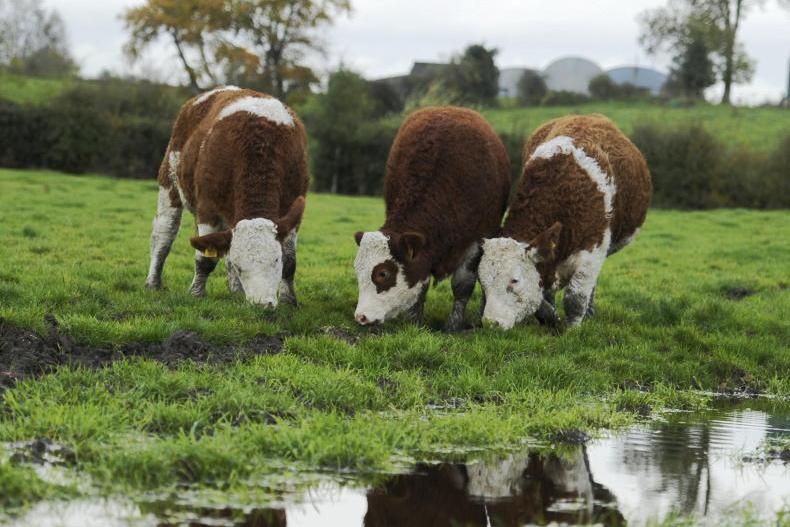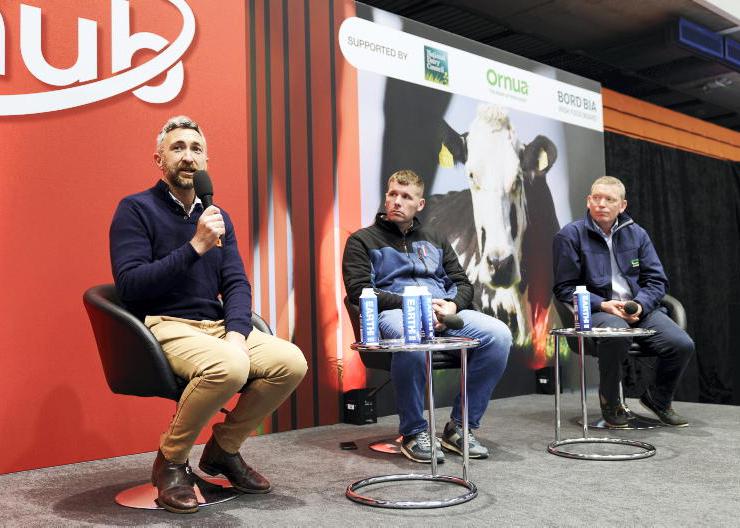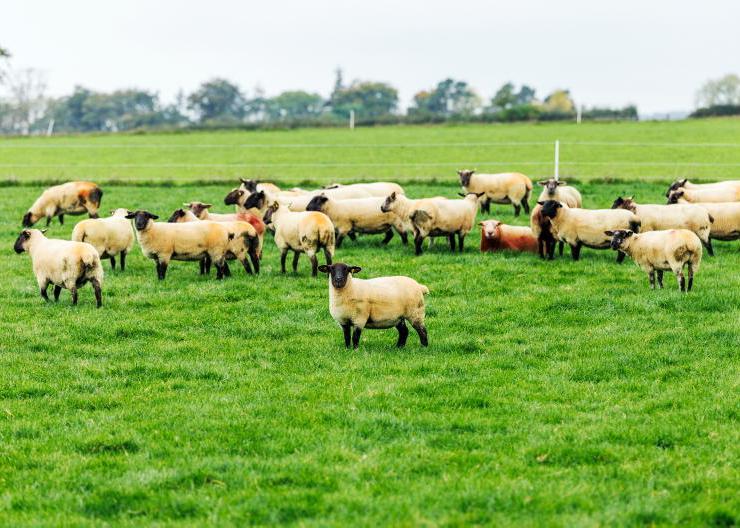Grass quality: It’s unbelievable the difference two to three weeks of settled weather can bring. Grass growth has completely turned around in the last two weeks and some farms are now looking at some paddocks getting strong for grazing.
Grassland management is difficult at this time of year and you need to keep your finger on the pulse to avoid a big reduction in grazing quality. If grass gets ahead of you and you start grazing heavy covers at this time of year, it will be very hard to maintain quality in swards for the rest of the year without using a mechanical intervention like topping.
You shouldn’t be grazing covers higher than 10cm (half way up the side of your welly boot) at this time of year. If grass quality declines, intakes will reduce and liveweight gain will take a hit, something you don’t want to happen as it’s the kg of weight gain that pays the bills. While there is nothing wrong with topping, it costs money and time, two items not in plentiful supply on beef farms.
So what can you do if you are heading into surplus country? Paddocks or fields that are too strong for grazing will make excellent quality silage that can be fed to weanlings next winter and cut down on concentrate feeding.
Grass growth will rocket now that rain has arrived and surpluses could arise very quickly. Don’t be afraid to leave things a little tight as good growth will make up the deficit in the short term. If removing bales from fields or paddocks, don’t forget to spread some P and K to replace the offtake from the silage crop.
Check that you are ok to spread P and K on your farm first of course.
One of the most important jobs in the next few weeks is to walk the farm on a regular basis, especially fields that are further away from the yard that wouldn’t be walked often. If strong grass growth continues, and grass quality is maintained, you may be able to skip a round of nitrogen. There is increasing evidence that some farms may be deficient in sulphur. Try spreading fertiliser with added sulphur for one or two rounds to see if it makes a difference.
Summer Dosing: For dairy beef calves you need to be looking at the first dose being given around eight weeks after turnout. Dosing products are quick, easy to use and relatively inexpensive, so the easy thing to do is dose calves every time you have them in the yard.
This practice may come back to bite you in terms of developing resistance to dosing products on your farm. Everybody has a responsibility to make sure that resistance doesn’t become a serious issue on our farms. Taking a faecal sample is a good way of determining whether you need to dose or not. Getting a fresh sample is important, putting calves up in the mornings and letting them walk away slowly is a good way of collecting samples.
Use a 25ml pot and take 5-15 samples per group and combine them to get a representative sample. Samples must reach the lab within 24 hours of taking them. Take the samples early in the week to avoid them sitting over the weekend in lab. Do not freeze samples. Don’t forget to label samples to fill out a lab submission form and send along with the samples.
Grass quality: It’s unbelievable the difference two to three weeks of settled weather can bring. Grass growth has completely turned around in the last two weeks and some farms are now looking at some paddocks getting strong for grazing.
Grassland management is difficult at this time of year and you need to keep your finger on the pulse to avoid a big reduction in grazing quality. If grass gets ahead of you and you start grazing heavy covers at this time of year, it will be very hard to maintain quality in swards for the rest of the year without using a mechanical intervention like topping.
You shouldn’t be grazing covers higher than 10cm (half way up the side of your welly boot) at this time of year. If grass quality declines, intakes will reduce and liveweight gain will take a hit, something you don’t want to happen as it’s the kg of weight gain that pays the bills. While there is nothing wrong with topping, it costs money and time, two items not in plentiful supply on beef farms.
So what can you do if you are heading into surplus country? Paddocks or fields that are too strong for grazing will make excellent quality silage that can be fed to weanlings next winter and cut down on concentrate feeding.
Grass growth will rocket now that rain has arrived and surpluses could arise very quickly. Don’t be afraid to leave things a little tight as good growth will make up the deficit in the short term. If removing bales from fields or paddocks, don’t forget to spread some P and K to replace the offtake from the silage crop.
Check that you are ok to spread P and K on your farm first of course.
One of the most important jobs in the next few weeks is to walk the farm on a regular basis, especially fields that are further away from the yard that wouldn’t be walked often. If strong grass growth continues, and grass quality is maintained, you may be able to skip a round of nitrogen. There is increasing evidence that some farms may be deficient in sulphur. Try spreading fertiliser with added sulphur for one or two rounds to see if it makes a difference.
Summer Dosing: For dairy beef calves you need to be looking at the first dose being given around eight weeks after turnout. Dosing products are quick, easy to use and relatively inexpensive, so the easy thing to do is dose calves every time you have them in the yard.
This practice may come back to bite you in terms of developing resistance to dosing products on your farm. Everybody has a responsibility to make sure that resistance doesn’t become a serious issue on our farms. Taking a faecal sample is a good way of determining whether you need to dose or not. Getting a fresh sample is important, putting calves up in the mornings and letting them walk away slowly is a good way of collecting samples.
Use a 25ml pot and take 5-15 samples per group and combine them to get a representative sample. Samples must reach the lab within 24 hours of taking them. Take the samples early in the week to avoid them sitting over the weekend in lab. Do not freeze samples. Don’t forget to label samples to fill out a lab submission form and send along with the samples.










SHARING OPTIONS